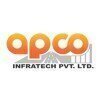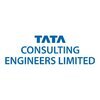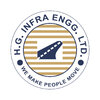Filter interviews by
Ajay Prakash Associates Construction Senior Structural Engineer Interview Questions and Answers
Ajay Prakash Associates Construction Senior Structural Engineer Interview Experiences
1 interview found
I applied via Referral and was interviewed in Jan 2023. There were 3 interview rounds.

(1 Question)
- Q1. Only about educational background then years of experience।। । After asking this site incharge (DPM,PM ,Gm, AGM) will call you back then they will ask about work you did
(1 Question)
- Q1. Grade of cement How to find cut off level in pile foundation Maximum distnace for pouring of concrete Length of summerged trimi pipe while casting of pile Maximum cover for pile
- Ans.
Various factors such as grade of cement, cut off level, maximum distance for pouring concrete, length of submerged tremie pipe, and maximum cover for pile affect pile foundation design.
Grade of cement affects the strength and durability of the concrete used in pile foundation.
Cut off level in pile foundation is determined based on factors such as soil conditions, load requirements, and construction constraints.
Maximum ...
Interview Preparation Tips
- Bar Bending Schedule
- Is 2911
- Is code 456-2000
Top trending discussions






Interview questions from similar companies

Senior Structural Engineer Interview Questions & Answers
Apco Infratechposted on 18 May 2024
I applied via Naukri.com and was interviewed in Apr 2024. There was 1 interview round.
(5 Questions)
- Q1. What is favourable zone in RCC
- Ans.
Favourable zone in RCC refers to the region of a reinforced concrete member where the concrete is in compression and the steel is in tension.
Favourable zone is the area where the concrete is able to resist compressive forces effectively.
It is typically located at the top of a beam or slab, where the bending moment is highest.
In this zone, the steel reinforcement helps to resist tensile forces, while the concrete resist...
- Q2. What is lap length
- Ans.
Lap length is the length of overlap between two reinforcing bars in a concrete structure to ensure proper transfer of loads.
Lap length is important for ensuring the continuity of reinforcement in concrete structures.
It is typically specified in building codes and design standards.
The lap length required depends on factors such as the diameter of the bars, concrete strength, and design loads.
For example, in a beam, the ...
- Q3. Type of lapping in reinforcement
- Ans.
Lapping in reinforcement involves overlapping two reinforcement bars to ensure continuity and strength in the structure.
Lapping is commonly used in construction to connect two reinforcement bars together.
The length of the lap varies depending on the design requirements and the type of reinforcement used.
Proper lapping ensures that the load is transferred effectively between the bars.
Examples of lapping include lap spli
- Q4. Role of bearing in bridges
- Ans.
Bearings in bridges help distribute loads and allow for movement due to temperature changes and settlement.
Bearings help distribute the loads from the superstructure to the substructure of the bridge.
They allow for movement of the bridge deck due to temperature changes, wind forces, and settlement of the foundation.
Bearings help reduce stress on the bridge components and prevent damage.
Common types of bearings used in ...
- Q5. Types of expansion joint
- Ans.
Types of expansion joints include slip joints, bellows joints, and modular joints.
Slip joints allow for movement in one direction only
Bellows joints accommodate movement in multiple directions
Modular joints are made up of separate components that can be replaced individually

Senior Structural Engineer Interview Questions & Answers
G R Infraprojectsposted on 26 Jun 2024
(2 Questions)
- Q1. Bridge construction and BBS
- Q2. Execution of site like vup

Senior Structural Engineer Interview Questions & Answers
L&T Constructionposted on 24 Dec 2023
I applied via Walk-in and was interviewed in Nov 2023. There were 3 interview rounds.

(1 Question)
- Q1. What is the is code for structure
- Ans.
The IS code for structures in India is IS 456:2000, which covers the general requirements for the design and construction of reinforced concrete structures.
The IS code for structures in India is IS 456:2000
It covers the general requirements for the design and construction of reinforced concrete structures
The code provides guidelines for materials, design, construction, quality control, and maintenance of structures
(1 Question)
- Q1. What is your straight & weakness?

Senior Structural Engineer Interview Questions & Answers
Tata Projectsposted on 4 May 2022
I applied via Walk-in and was interviewed in Apr 2022. There were 3 interview rounds.

(4 Questions)
- Q1. Any Structure related work
- Q2. Bridge ,rob rub,fob mib,mib
- Q3. Any questions regarding Major structure
- Q4. Civil engineering related
Interview Preparation Tips

Structural Engineer Interview Questions & Answers
Megha Engineering & Infrastructuresposted on 12 Nov 2024
(2 Questions)
- Q1. What is ph value of bentonite
- Ans.
The pH value of bentonite typically ranges from 8 to 10.
Bentonite is a clay material commonly used in construction and engineering projects.
The pH value of bentonite can vary depending on its source and composition.
A pH value of 7 is considered neutral, so bentonite is slightly alkaline.
The pH value of bentonite is important in determining its suitability for various applications.
- Q2. What is mean fe500
- Ans.
FE500 is a grade of steel used in construction, indicating its yield strength in megapascals.
FE500 is a designation for a type of steel reinforcement used in construction
The 'FE' stands for 'iron', while '500' indicates the minimum yield strength in megapascals
FE500 steel is commonly used in reinforced concrete structures for its high strength and durability

I applied via Walk-in and was interviewed in Feb 2024. There was 1 interview round.
(2 Questions)
- Q1. What is the IS code of pile.
- Ans.
IS 2911 is the Indian Standard code for design and construction of pile foundations.
IS 2911 is the code for design and construction of pile foundations in India.
It covers various types of piles including driven piles, bored cast-in-situ piles, etc.
The code provides guidelines for the design, materials, construction, and testing of piles.
It ensures the safety and stability of structures supported by piles.
Example: IS 29...
- Q2. What is the density of bentonite during piling.
- Ans.
The density of bentonite during piling is typically around 1.0 to 1.2 g/cm^3.
The density of bentonite can vary depending on the specific type and concentration used.
Higher density bentonite is often preferred for better support during piling operations.
Typical range of density for bentonite during piling is 1.0 to 1.2 g/cm^3.

Structural Engineer Interview Questions & Answers
Larsen & Toubro Limitedposted on 18 Jan 2024
I applied via Walk-in and was interviewed in Dec 2023. There was 1 interview round.
(3 Questions)
- Q1. Auto cad commands
- Q2. Trim Shortcut Key
- Q3. Fillet Command Use Which Purpose
- Ans.
The Fillet command is used in structural engineering to create a rounded corner between two lines or objects.
The Fillet command is used to create a smooth transition between two lines or objects by adding a rounded corner.
It is commonly used in structural engineering to create fillets at the junctions of beams, columns, and other structural elements.
The Fillet command can be used with different radius values to control...
Interview Preparation Tips
Skills evaluated in this interview

Structural Engineer Interview Questions & Answers
Nagarjuna Construction Companyposted on 15 Jun 2024
(2 Questions)
- Q1. What is mean by shear key
- Ans.
Shear key is a device used to transfer shear forces between two components in a structure.
Shear keys are typically used in construction joints to prevent sliding between adjacent components.
They are designed to resist horizontal forces and ensure stability.
Shear keys can be found in structures such as bridges, buildings, and dams.
Examples include shear keys in bridge expansion joints to prevent movement between bridge
- Q2. Different between columns and beams
- Ans.
Columns are vertical structural members that support loads, while beams are horizontal members that transfer loads to columns or walls.
Columns are vertical and primarily support compressive loads.
Beams are horizontal and primarily support bending loads.
Columns are typically taller than they are wide, while beams are typically wider than they are tall.
Examples: In a building, columns support the weight of the floors abo...
Interview Preparation Tips

I applied via Walk-in and was interviewed in Aug 2023. There was 1 interview round.
(5 Questions)
- Q1. Design of one way slab
- Ans.
One way slab is a type of reinforced concrete slab where the main reinforcement is provided in only one direction.
Main reinforcement is provided in the shorter span direction
Distribution bars are provided in the longer span direction
Commonly used in buildings with rectangular floor plans
- Q2. Difference between short column and long column
- Ans.
Short columns fail due to crushing of material, while long columns fail due to buckling.
Short columns have a slenderness ratio less than a certain critical value, while long columns have a slenderness ratio greater than that value.
Short columns are more likely to fail in compression, while long columns are more likely to fail in buckling.
Examples of short columns include columns in buildings, while examples of long col
- Q3. Design of two way slab
- Ans.
Two way slab is a type of reinforced concrete slab that is supported by beams in both directions.
Two way slab is designed to carry loads in both directions, typically used in buildings with square or rectangular floor plans.
The design of two way slab involves determining the thickness, reinforcement layout, and spacing of bars to ensure structural integrity.
The slab is supported by beams on all four sides, allowing for...
- Q4. Design of staircase
- Ans.
Designing a staircase involves considering factors such as building codes, safety regulations, space constraints, and aesthetic appeal.
Consider the height and width of each step to ensure comfortable and safe use.
Calculate the rise and run of the staircase to determine the number of steps needed.
Choose a suitable material for the staircase based on the design requirements and budget.
Ensure proper handrails and guardrai...
- Q5. Wind load calculations
Interview Preparation Tips
Ajay Prakash Associates Construction Interview FAQs
Tell us how to improve this page.
Interview Questions for Popular Designations
- Structural Engineer Interview Questions
- Civil Structural Engineer Interview Questions
- Structural Design Engineer Interview Questions
- Junior Structural Engineer Interview Questions
- Senior Structural Design Engineer Interview Questions
- Structural Engineer Trainee Interview Questions
- Civil Structural Designer Interview Questions
- Structural Steel Detailer Interview Questions
- Show more
Senior Structural Engineer Interview Questions from Similar Companies
|
Junior Engineer Civil
3
salaries
| ₹2.6 L/yr - ₹2.6 L/yr |

Larsen & Toubro Limited

L&T Construction

Tata Projects

Megha Engineering & Infrastructures
- Home >
- Interviews >
- Ajay Prakash Associates Construction Interview Questions >
- Ajay Prakash Associates Construction Senior Structural Engineer Interview Questions






